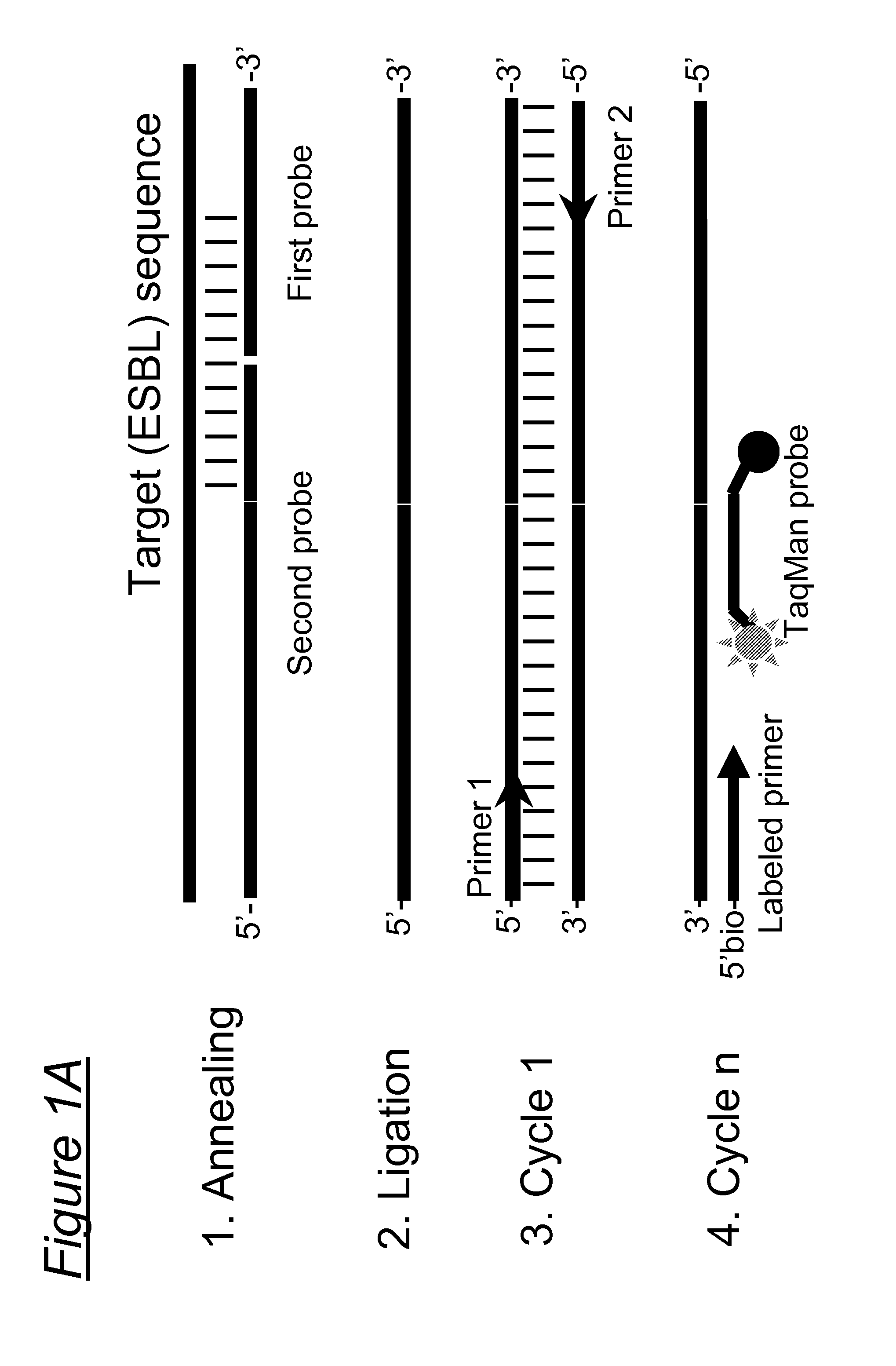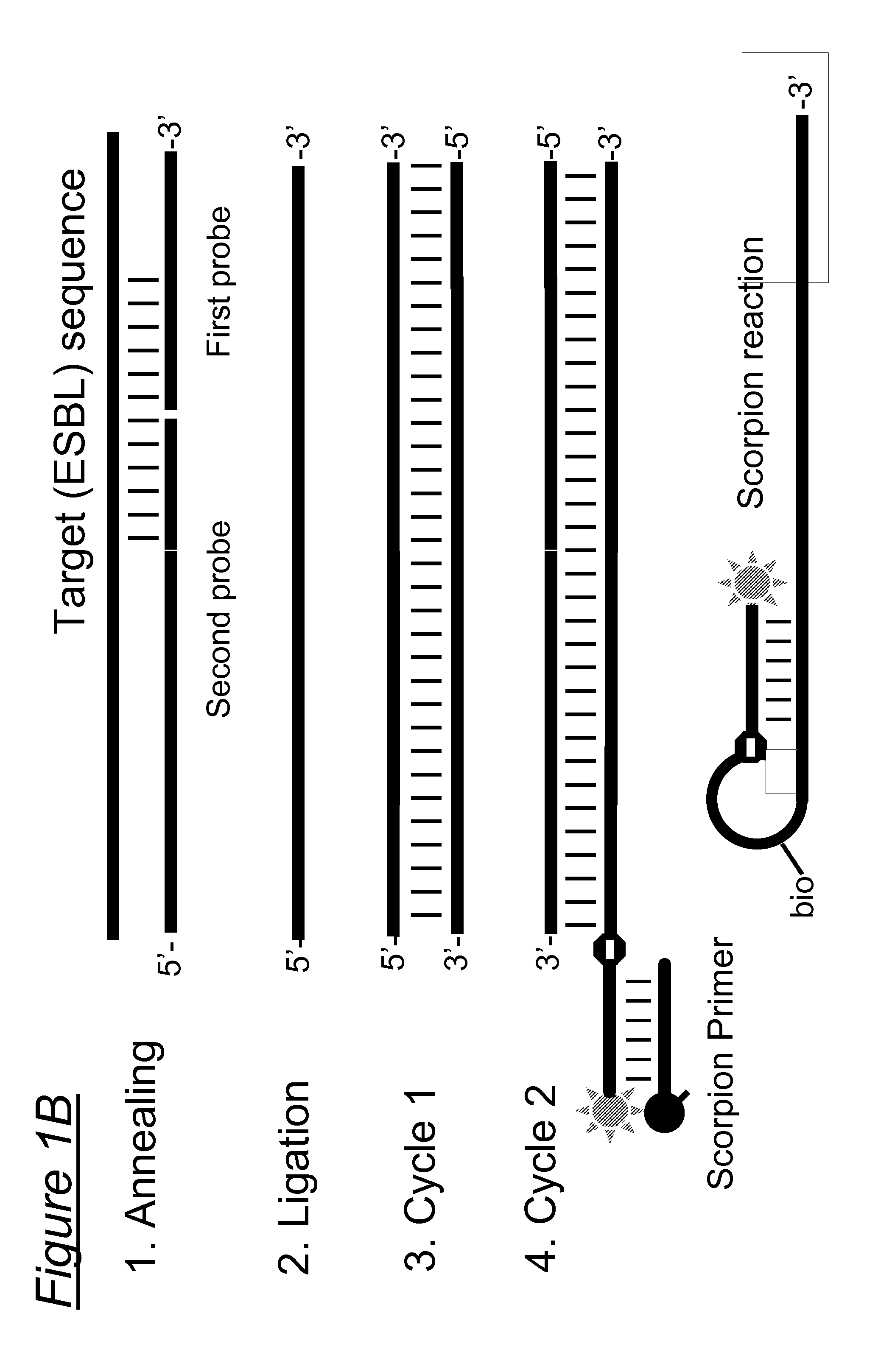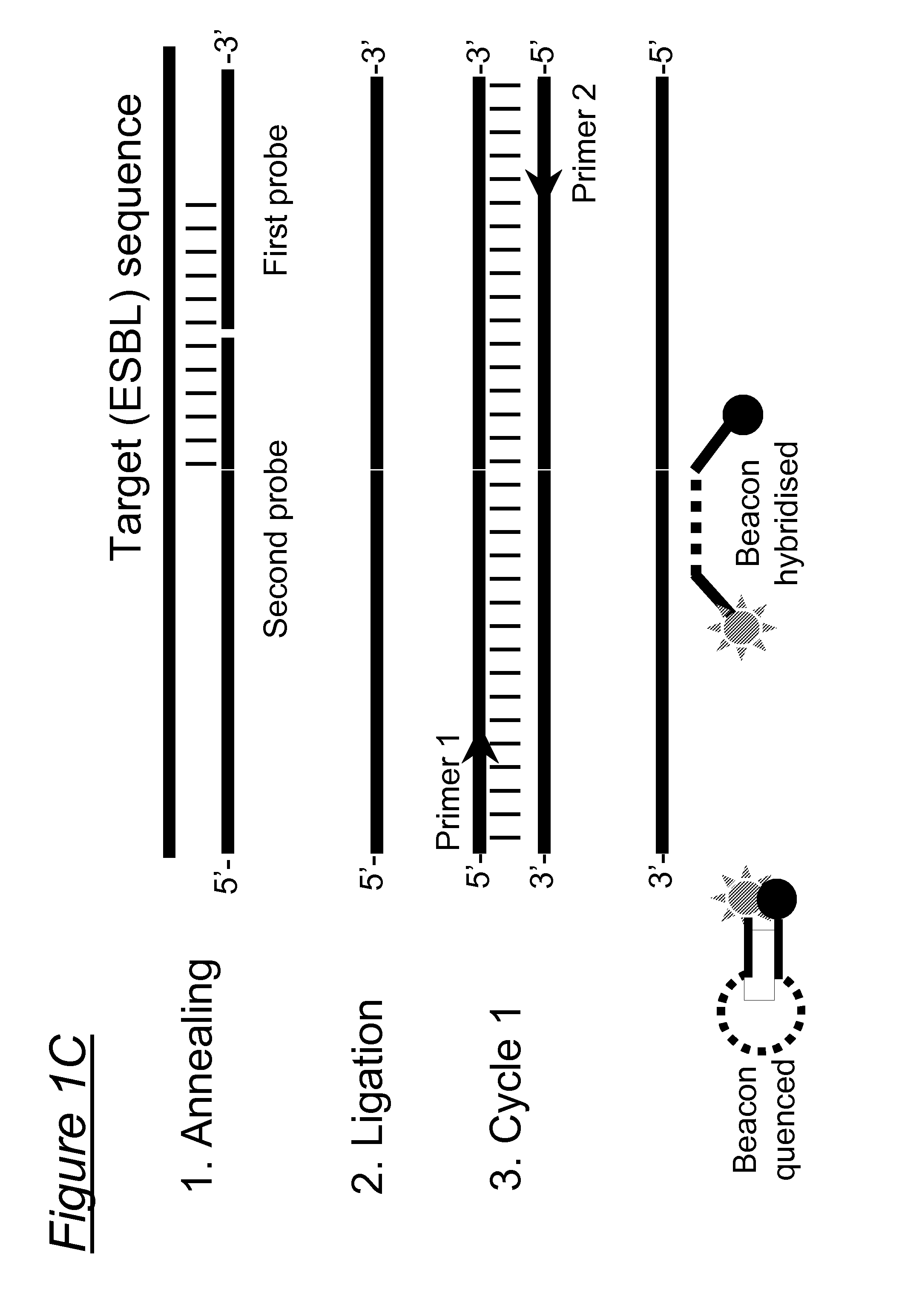Assays, compositions and methods for detecting drug resistant micro-organisms
a technology of compositions and microorganisms, applied in the field of drug resistant microorganism detection assays, compositions and methods, can solve the problems of gram negative bacteria carrying esbl, posing a serious health risk, and being easily transmitted from human body
- Summary
- Abstract
- Description
- Claims
- Application Information
AI Technical Summary
Benefits of technology
Problems solved by technology
Method used
Image
Examples
example 1
Materials and Methods
1.1 Probe Design
[0208]To identify essential SNPs associated with the ESBL phenotype for inclusion in the assay, sequences of all listed TEM variants (n=175) and SHV variants (n=128, SHV-1 through SHV-127 including SHV-2 and SHV-2a) in the Lahey database (http: / / www.lahey.org / Studies / ) as of 6 Sep. 2009 were analyzed and related to phenotypic characteristics as described in the literature (www.pubmed.qov).
1.1.1 TEM Variants:
[0209]The Lahey database contained 175 TEM variants. According to this database, no data were available for 12 variants (reserved, withdrawn or not listed), 24 variants had an unknown phenotype, 51 variants had an non-ESBL beta-lactamase phenotype, and 88 had an ESBL phenotype of which 95% (84 / 88) had at least one of the following amino acid substitutions: R164S / H / C (n=50 variants), G238 D / N / S (n=30 extra variants), E104K n=4 extra variants) (Table 1a). These substitutions were not observed in non-ESBL TEM variants.
[0210]Based on these finding...
example 2
Results
2.1 Test Characteristics of the Microarray
[0229]Using molecular characterization by PCR and sequencing, and the corresponding 299 phenotype according to the Lahey database as the reference test, the sensitivity of the microarray was 101 / 106 (95%; 95% Cl 89-98%), the specificity was 106 / 106 (100%; 95% Cl 97-100%).
[0230]A false-negative result was obtained in 5 ESBL positive isolates (supplementary table 2). In two isolates, TEM-5 and TEM-7 positive, the R164S mutation was not detected and in one isolate, TEM-72 positive, the G238S mutation was not detected. Detection of these mutations is essential since the difference with non-ESBL TEM variants is based on these single mutations (Table 1). In one isolate, a CTX-M-39 gene (CTX-M group 8 / 25) was not detected. Finally, as expected, the SHV-57 ESBL was not detected because the SHV-57 does not have amino acid substitutions at positions detected by the array system (Table 1b and 2).
2.2 Accuracy of Individual Probes to Identify Spec...
example 3
RNA-Based Amplification Techniques
[0235]The present invention also relates to RNA-based amplification techniques for amplifying the connected probe assemblies. The present example illustrates the LDR-NASBA and LDR-TMA technique. These techniques require the conversion of DNA and / or cDNA into RNA through the combined action of reverse transcriptase and RNA polymerase activities, e.g. T7 RNA polymerase. As schematically represented in FIG. 3, the nucleic acid probes bind to the target sequence via TSS-1 and TSS-2 in the first step (1). One of the probes additionally comprises the T7 promoter at its 5′ terminus. Then, a conventional LDR step is performed resulting in the formation of a single-stranded connected probe nucleic acid (2). Subsequently, a reverse transcriptase activity synthesizes the complementary DNA strand of the single strand connected probe DNA formed in step 2 resulting in double-stranded DNA (3). Next, RNA polymerase activity (T7 RNA polymerase) catalyzes the formati...
PUM
| Property | Measurement | Unit |
|---|---|---|
| melting temperature Tm | aaaaa | aaaaa |
| melting temperature Tm | aaaaa | aaaaa |
| melting temperature Tm | aaaaa | aaaaa |
Abstract
Description
Claims
Application Information
 Login to View More
Login to View More - R&D
- Intellectual Property
- Life Sciences
- Materials
- Tech Scout
- Unparalleled Data Quality
- Higher Quality Content
- 60% Fewer Hallucinations
Browse by: Latest US Patents, China's latest patents, Technical Efficacy Thesaurus, Application Domain, Technology Topic, Popular Technical Reports.
© 2025 PatSnap. All rights reserved.Legal|Privacy policy|Modern Slavery Act Transparency Statement|Sitemap|About US| Contact US: help@patsnap.com



